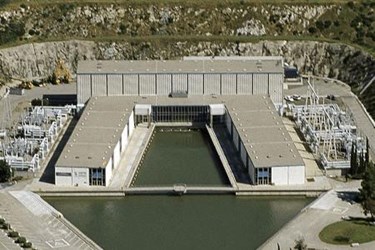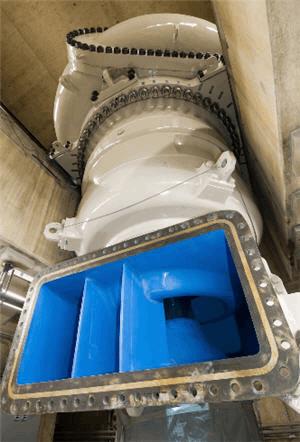What Pumps Tell Us About Water, Power, And The Worker
By Artun Ereren

High up in the Tehachapi Mountains of California’s Central Valley lies the largest consumer of the state’s electricity, driving 14 centrifugal pumps, each rated at 80,000 hp. The Tehachapis derive their name from the Kaiwassuu indigenous word meaning “hard climb”; at a maximum elevation of 7,981 ft., the original term is quite fitting. These massive pumps at the Edmonston Pumping Plant require 60 MW of power to move water 1,926 ft. high, through 8.5 miles of mountain range. Water and electricity flow in tandem throughout California’s State Water Project and at times let gravity do some of the work. I can’t think of a better symbol of the water-energy nexus than the pumps at the foot of those colossal mountains. For a closer look at Edmonston Plant, check out Maven’s awesome photo tour.
Pumps are the beating heart of any water distribution system. The challenge of meeting water supply demands, moving sewage, and maintaining pressure for fire extinguishing always has a pump involved with the solution. Since the motors and controls that drive our pumps are mostly powered by electricity, they become as equally important as the water distribution components of the pump. In the case of a municipal system, we are looking at the 24/7 operation of pumps, meaning that in order for water to be treated and then distributed, the electrical substations are working at the same unwavering rate. Thanks to advances in automation, pumps are able to perform efficiently through the lightning-quick responses of variable frequency drives (VFDs) and centralized supervisory control and data acquisition (SCADA). However, in light of automated technology, the human element — in this case, water operators — is an indispensable part of the operation of pumps.
 I was under the impression that automation would make our lives easier until one day I got a first-hand look at how a centrifugal pump is supposed to be properly wired to a VFD and then to SCADA. (As one can imagine, electrical knowledge is a language in itself.) Operators in the field and at the treatment plants are responsible for monitoring the pumps that our society relies on. Modern-day pumps embody both concepts of water and electricity, so does that mean operators have to play the role of both plumber and electrician? I got the chance to ask this question to Steve Hernandez, the Water Operations Manager at the City of Watsonville, CA. Along with being an experienced distribution and treatment operator, Hernandez has trained nearly 600 operators through his training program, WaterWisePro.
I was under the impression that automation would make our lives easier until one day I got a first-hand look at how a centrifugal pump is supposed to be properly wired to a VFD and then to SCADA. (As one can imagine, electrical knowledge is a language in itself.) Operators in the field and at the treatment plants are responsible for monitoring the pumps that our society relies on. Modern-day pumps embody both concepts of water and electricity, so does that mean operators have to play the role of both plumber and electrician? I got the chance to ask this question to Steve Hernandez, the Water Operations Manager at the City of Watsonville, CA. Along with being an experienced distribution and treatment operator, Hernandez has trained nearly 600 operators through his training program, WaterWisePro.
“Electrical knowledge is crucial for operators, but I don’t see it as a key component of their job responsibilities. Above all else, it is important for operators to be effective troubleshooters. Troubleshooting allows an operator to catch a problem with a pump before it becomes a much bigger issue.”
Does that mean operators can always call an electrician within an arm’s reach when an electrical issue occurs? According to Hernandez, electricians are often contracted out mainly because of budget issues. While there is certainly a demand for more operators in the water industry, given how fast our automated technology has found its place in society, we could be seeing a growing demand for electricians as well. Like the very pumps they maintain, operators — like pumps — can continue to build bridges between water and power.
